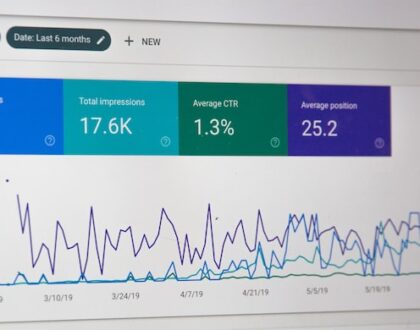Can Attentiveness Actually Drive Campaign Success?

by editor
In recent years, advertisers and their ad agencies have prioritized attention measurement in their efforts to forecast and maximize outcomes. The idea is simple: if attention can be accurately assessed, it can assist forecast and improve the performance of advertisements, from increasing brand lift to driving sales and even modifying campaigns in real time.
However, while attention is vital, it does not provide the complete picture. To properly understand what drives success, marketers must examine data quality, audience relevancy, creative execution, and the context of the ad.
The complexities of assessing attention
One significant problem is that no single approach can accurately evaluate attentiveness. To acquire a more comprehensive knowledge, marketers must mix insights from many methodologies, such as:
Eye tracking.
Facial coding.
Physiological observations (heart rate and blood pressure).
Neurological measurements (brainwaves and EEG).
Data signals (such as hovers and completion rates).
Qualitative approaches such as surveys.
Many solution providers are collaborating to integrate disparate data sources into cohesive models, increasing scoring and indexing. For example, data providers are collaborating with eye-tracking firms to combine behavioral and visual attention data, resulting in a more comprehensive picture of engagement.
By combining several data sets, these collaborations provide deeper, multidimensional insights that help marketers understand how attention relates to total campaign success.
Importance of Data Quality
Data quality is equally important. It is not only important to have large datasets, but also to ensure that the data is well-represented throughout segments and that strong models are employed to understand it. Without a representative dataset, marketers may reach incomplete or incorrect conclusions.
The accuracy with which data represents audience segmentation, the models used, and the data collection methods are all important considerations. Understanding how different audiences react to different advertisements, based on industry, format, and message type, is crucial. Audience emotions can vary greatly, and insights should reflect these disparities.
Understanding Audience Behavior
Audience reactions vary widely based on the brand’s goal (direct response or brand promotion), creative structure, and message kind.
In a direct response campaign, consumers may be more engaged with advertising that promote limited-time promotions or unambiguous calls to action, such as a modest banner with a “Shop Now” button or a full-page takeover with a special price.
Branding initiatives, on the other hand, may see increased engagement with visually rich video commercials that tell a story, convey the brand’s values, or employ humor to create a memorable experience.
Tone is also an important consideration. Is it simple and product-focused to increase sales, or lighter and funny to foster brand loyalty? All of these factors can have an impact on how well the message reaches the intended audience.
Evaluating Publishers: Performance Versus Generalization
When evaluating publishers, decide if you want to use actual ad performance statistics or generalizations based on content type.
- Actual performance data provides extensive insights into how advertisements function in certain situations, allowing for more targeted adjustments.
- Generalizing by content type allows for the identification of broader patterns and trends across related characteristics, providing a predictive picture that can be used to plan for new situations.
Precise data on ad performance across various parts, locations, and audience segments is required for more accurate evaluation. Combining the two methodologies allows marketers to use attention metrics more efficiently and make better judgments.
Context and relevance.
However, simply paying attention is insufficient; context is essential. Ads do not exist in isolation. The setting in which an ad appears, how it is seen, and what surrounds it are critical to catching attention and engagement. It is more than just if someone viewed an advertisement. It’s about where they saw it, how they saw it, what was around it, and how important it was to them at the time.
Even a highly eye-catching creative will not provide the desired outcomes if the ad is not relevant to the viewer or is shown in an unresonant atmosphere.
Relevant and inventive execution
Relevance and innovative execution are equally important. Capturing attention is merely the first step; meaningful engagement requires more. The ad must connect with the audience, convey a compelling message, and be delivered at the appropriate time.
If the ad is irrelevant, no amount of attention will result in actual outcomes. This is why attention should be considered as an indicator rather than a money to be traded. Attention measurement provides useful information about how well an ad works in certain settings and how good a piece of creative is at attracting an audience. However, it should never be used as the only basis for making decisions. It’s a single piece of a much greater puzzle. Relying on it too heavily risks missing the big picture.
Attention isn’t one-size-fits-all.
Attention is subjective and fluctuates greatly, even amongst advertisements for the same advertiser. What captures attention in one ad may fall flat in another. Attention isn’t a universal metric. It varies depending on a variety of factors, thus it’s crucial to use it as one of several tools when evaluating or enhancing campaign effectiveness.
A comprehensive strategy to evaluating publishers.
When it comes to analyzing publishers, attention metrics alone cannot tell you whether a publication produces meaningful results for advertising. Understanding a publisher’s influence necessitates data from many locations and audience segments.
It is critical to determine how much attention an ad receives and how various audiences interact with it inside the publisher’s ecosystem. This necessitates a comprehensive review that goes beyond attention measurements and considers engagement, audience relevance, creative resonance, and overall performance outcomes.
The larger picture: Beyond focus to actual outcomes
Attention measurement is an important tool for advertisers, but it is not a stand-alone solution. While attracting attention is crucial, it is only one component of a larger strategy required to achieve true success. To really assess ad success, examine data quality, audience relevancy, creative execution, and the environment in which ads are displayed.
Attention alone does not guarantee results. What matters once the ad has gained attention is whether it resonates, is relevant, and aligns with advertising objectives. Marketers may improve campaign optimization and achieve real business results by balancing attention with other important aspects.
Recommended Posts

Marketers Must Create Time for Time Management
October 25, 2024

Maximizing Revenue Growth Through Sales and Marketing Alignment
October 11, 2024

What Technology Do You Think Will Win the Martech Race?
September 20, 2024
